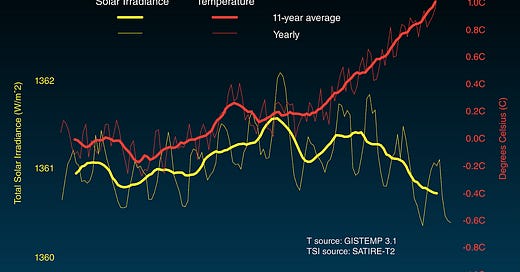Shining New Light on Climate Science: The Photomolecular Discovery That Could Change Everything
Rethinking CO2's Dominance in Climate Change Narratives
The understanding of Earth's climate and the factors influencing its changes is a subject of intense study and debate. Traditional views have emphasized the role of sunlight in warming the atmosphere, driving the water cycle, and influencing weather patterns. Climate scientists claim that greenhouse gases like CO2 are major drivers of recent global warming. However, some aspects of climate science, such as the influence of the sun and cosmic rays, suggest a more complex scenario. Recent discoveries, like the photomolecular effect, further complicate the climate narrative, pointing to a potentially significant role of solar energy in processes previously attributed solely to GHGs. This effect, which allows light to cause evaporation of water independently of heat, could revolutionize our understanding of climate systems and the sun's impact on climate change.
NASA acknowledges the sun as the primary source of Earth's heat, thereby playing a crucial role in the climate system. Solar irradiance—the sun's output of energy reaching Earth—has been closely monitored, with variations associated with the sun's magnetic activity and sunspot cycle. According to NASA, the changes in solar irradiance are too small to account for the climate change observed in recent decades. Instead, NASA's studies emphasize the amplifying effect of human-made CO2 and other greenhouse gases on global warming.
In its various assessment reports, the IPCC has consistently evaluated the role of solar irradiance in climate change, generally concluding that changes in solar energy output have played a relatively minor role in climate change since the pre-industrial era, especially when compared to the dominant influence of greenhouse gases like CO2. AR6 discusses how natural factors, including solar activity, do contribute to climate variability but do not account for the overall warming trend observed over the last several decades.
However, the recent discovery by researchers at MIT, known as the photomolecular effect, unveils a significant dimension in our understanding of water evaporation—a process fundamental to Earth's climate system.
Keep reading with a 7-day free trial
Subscribe to Irrational Fear to keep reading this post and get 7 days of free access to the full post archives.




